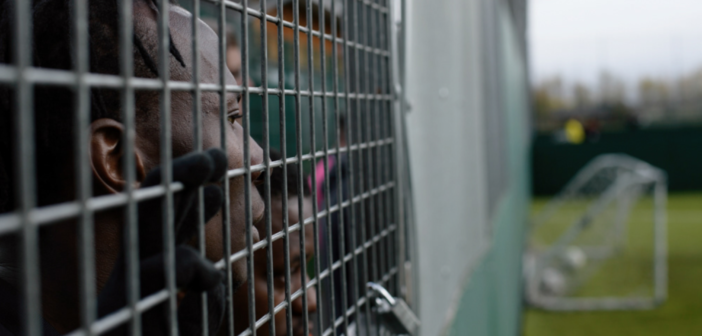In his second preview of this year’s Homeless World Cup Tim Hartley meets two of the host country’s coaches and explains how the tournament works.
There’s just a month to go before the big kick off. No, not the return of the English Premier League. This is the tournament with a difference – the 17th Homeless World Cup. Players from more than 50 countries are travelling to the capital of Wales, Cardiff, to play in the week-long festival of football. The tournament has been transforming the lives of people experiencing homelessness since the first competition in Austria in 2003. In our last article on Prost International we looked at two players from different sides of the world. Now for you ‘statos’ here are some facts and figures about how the finals are played.
The tournament has separate competitions for men and women’s teams and the games are played on specially constructed, smaller pitches. Teams come from as far afield as Zimbabwe and Ivory Coast, South Korea, Colombia and Cambodia. Mexico are defending their world title in both the men’s and women’s competitions. It’s difficult to know who the better teams are. There’s no form to go by really as players only get to play in one tournament. But in a sense winning is not the point.
Each nation brings a full squad of eight players but there are only four players per team on the field at any one time. The teams for each country are selected by local partners who support football-based programmes around the world. The rules are specific on who and cannot play. Players must have been homeless or an asylum seeker within the previous year, make their living as a street paper vendor or be in drug/alcohol rehabilitation and been homeless within the previous two years. And you can only play in one World Cup.
I met Keri Harris who’s the squad manager for both the men’s and women’s Welsh teams. He used to be work with the Big Issue magazine which homeless people sell on the streets of UK towns and cities. We watched the Wales players shuffle off after their final trial matches in Newport, south Wales.
Keri knew all the players personally having been involved with street football for 16 years. He was at the very first Homeless World Cup in Graz, Austria. ‘Things were different back then,’ he said. ‘Our last player was only selected the night before we left. I walked into the hostel in Swansea and said, ‘who’s got a passport and can kick a ball? His name was Fowler and he spent the whole week telling everyone he was Robbie Fowler’s brother. He was a nice guy but couldn’t play football to save his life and never kicked a ball!’
Zamu came from Uganda to Wales to flee persecution. ‘When I came to Wales I just wanted somewhere safe to stay, just move my life forward,’ she said. ‘I thought football would be something to help me, to create friends. I now have a community, a place where you are accepted. It make me feel like I have a family. It’s like a home for me.’ Zamu played for Wales in the 2016 Homeless World Cup in Glasgow. She says the experience was amazing. ‘Playing football makes me happy. It makes me who I am,’ she said. ‘It helps me build my confidence in everyday things. I moved from being homeless to studying and then living on my own.’
Despite countless moving stories like Zamu’s, Wales manager Keri Harris said it’s been a challenge to convince people that sport can have such a positive impact on people’s lives and destiny. ‘I don’t believe that anyone who attends Cardiff 2019 will ever question that again,’ he said. ‘They will be blown away just as I was at that first tournament – it’s one of those things that needs to be seen to be believed.’
The 17th Homeless World Cup takes place in Cardiff from Saturday July 27th to Saturday August 3rd 2019.
Tim Hartley is a journalist and author. Follow him on twitter – @timhhartley or on Facebook – www.facebook.com/AuthorTimHartley
Spectators can also view a photo exhibition of the Homeless Football World Cup players, run in conjunction with the tournament in Cardiff, by Paul John Roberts.
![Prost International [PINT]](https://prostinternational.com/wp-content/uploads/2021/08/PINTtFontLogoRoboto1536x78.jpg)




